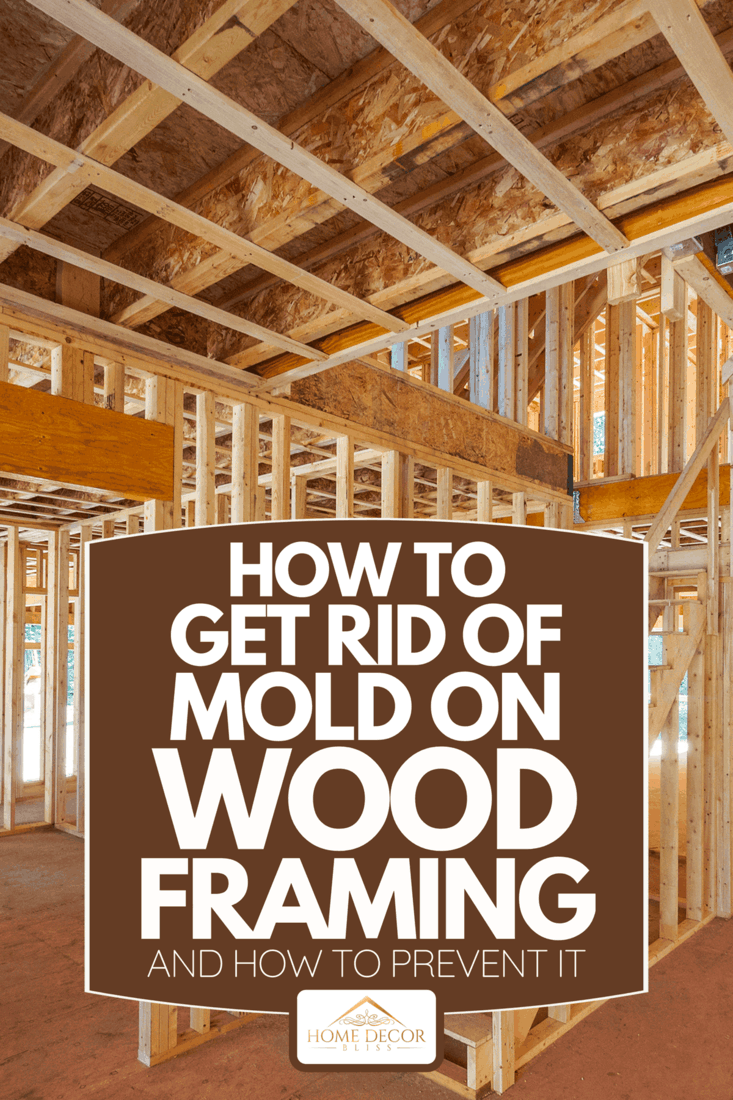The good news is that mold, an invasive fungus that can put fear in the heart of any homeowner, can be treated and prevented. The not-so-good news is that it takes a little grit and elbow grease to make it happen, especially if the mold has already established a hold in a home. We've researched the most effective ways you can banish mold from wood framing and how to prevent mold from taking hold in the first place.
Mold and mildew removal must always include:
- Personal Protection
- Preparation
- Cleaning
- Drying
Mold and mildew prevention may include:
- Keep it Dry
- Sealant
- Anti-Fungicide
While it may seem like a clear-cut, problem-solution situation, there are many parts that factor into staying safe while getting rid of mold and mildew. Many products on the market promise fast solutions, and there is a wide swath of advice on the techniques and ratios of chemicals to get rid of mold. There are also many ideas of how to prevent it in the future. Keep reading for more information on this complex problem.

We may include affiliate links and curated AI content to highlight top design styles.
Mold and Mildew Removal
Protection
Preparation
Cleaning
Does vinegar kill mold on wood?
Drying
Sunshine is the best solution. If the worksite you are using is outside, make sure all of the wood framing has a sunny spot to dry. It does need to dry thoroughly and two to three days is generally considered best.
If the worksite is inside, now is the time to add dehumidifiers, and fans to windows and ceilings. These should run for at least three days, although some advice suggests one to two weeks to make sure everything has dried completely.
Click here to see Vremi's large area dehumidifier on Amazon.
Once everything is dry, seal the affected area with a mold and mildew-resistant sealant. Some sealants that double as primers you can readily find are KILZ, an oil-based primer, or shellac like BIN.
Mold and Mildew Prevention
Keep it Dry
If there is a problem that consistently introduces moisture to wood framing, it is important to fix the source of the moisture before doing the work to get rid of the mold. If outside, it can be difficult to keep worksites dry and wood mold-free. However, if moldy wood framing is used for the construction of a home or outbuilding, the end result will not suit anyone's needs.
Sealants and Anti-Fungicide
Sealants can provide a good protective barricade to mold and mildew spores. As mentioned earlier, KILZ, an oil-based primer, or shellac, like BIN,
can be an appropriate prevention measure to mold taking hold on wood framing.
Anti-fungicides act to prevent mold and mildew as well. These are chemicals that do not provide a barrier so much as a layer of warrior protection destroying any spores they come into contact with. Sometimes wood framing will already be treated with anti-fungicide, just as it may be treated against termites.
Click here to see Zinsser's Mold Killing Primer at Amazon.
What kills black mold on wood?
Black mold can be cleaned with the process discussed above. First, use a detergent and warm water combination. A soft bristle brush is the most useful in order to scrub in the mixture. If, after wiping off the detergent and water, mold persists, consider the use of vinegar, or chlorine bleach.
What kills white mold on wood?
How do you remove mold from wood joists?
Final Thoughts
Mold and mildew grow quickly. Regardless of the treatment, treating mold on wood framing is most important once it is found. Time is of the essence. It is crucial not to leave a problem such as this untreated. Mold and mildew occur in more places than wood framing. For tips and tricks on how to get rid of mold that has encroached into your shower grout, click here.
Prevention is always best, and mold can easily begin on something as simple as the shower curtain. Find the "5 Best Shower Curtain Liners to Avoid Mildew and Mold."







